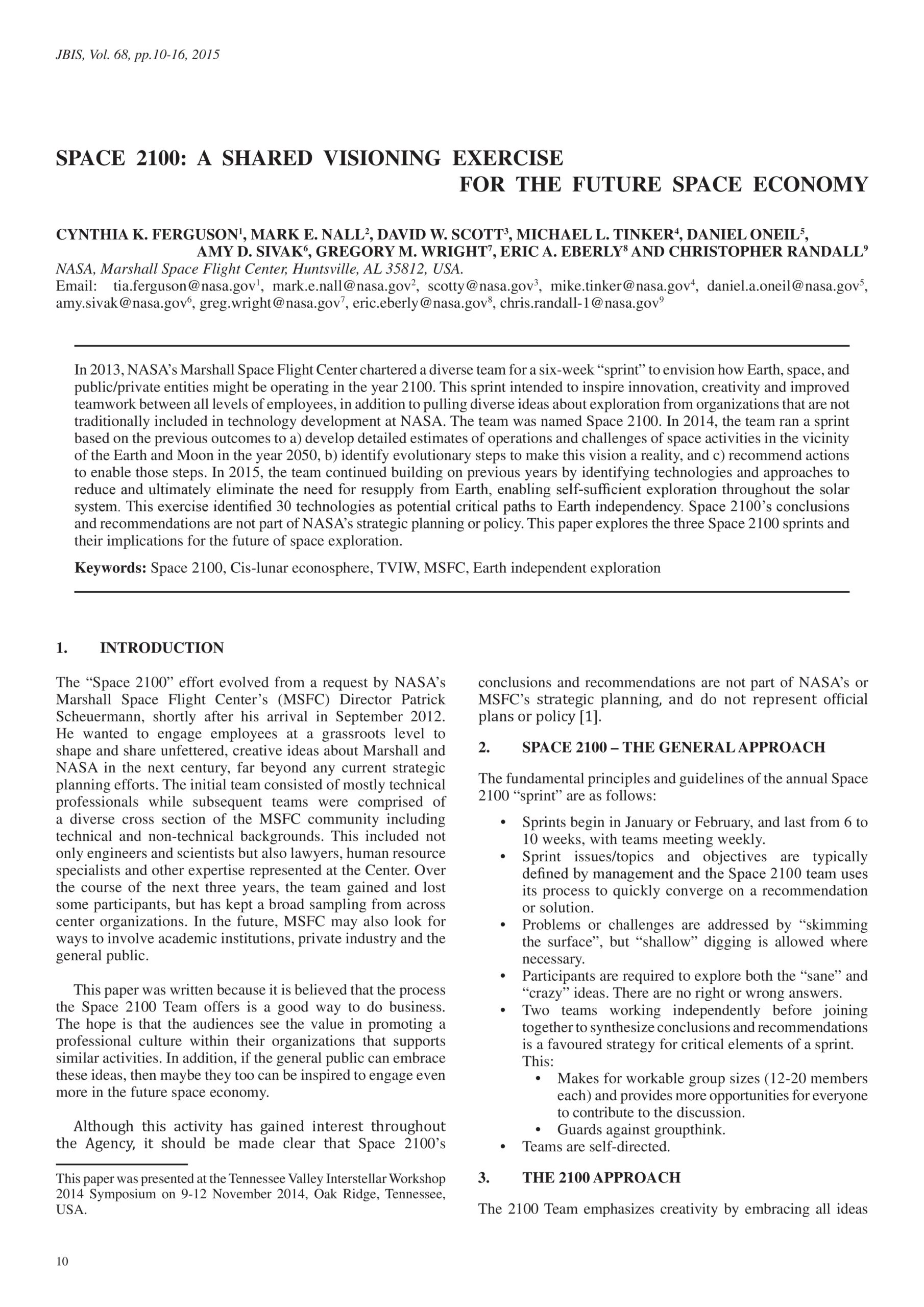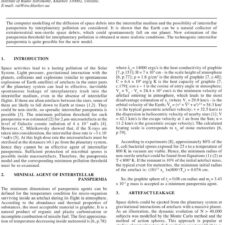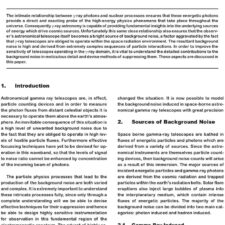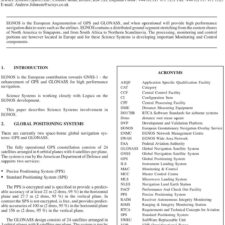Space 2100: A Shared Visioning Exercise for the Future Space Economy
£5.00
C. K. Ferguson et al. (2015), JBIS, 68, pp.10-16
Refcode: 2015.68.10
Abstract:
In 2013, NASA’s Marshall Space Flight Center chartered a diverse team for a six-week “sprint” to envision how Earth, space, and public/private entities might be operating in the year 2100. This sprint intended to inspire innovation, creativity and improved teamwork between all levels of employees, in addition to pulling diverse ideas about exploration from organizations that are not traditionally included in technology development at NASA. The team was named Space 2100. In 2014, the team ran a sprint based on the previous outcomes to a) develop detailed estimates of operations and challenges of space activities in the vicinity of the Earth and Moon in the year 2050, b) identify evolutionary steps to make this vision a reality, and c) recommend actions to enable those steps. In 2015, the team continued building on previous years by identifying technologies and approaches to reduce and ultimately eliminate the need for resupply from Earth, enabling self-sufficient exploration throughout the solar system. This exercise identified 30 technologies as potential critical paths to Earth independency. Space 2100’s conclusions and recommendations are not part of NASA’s strategic planning or policy. This paper explores the three Space 2100 sprints and their implications for the future of space exploration.





